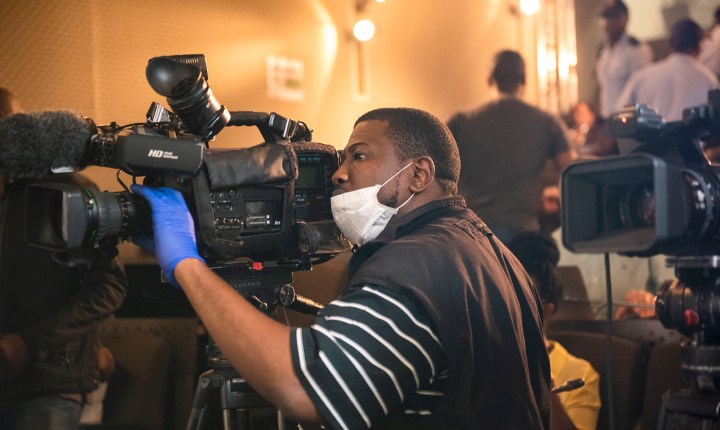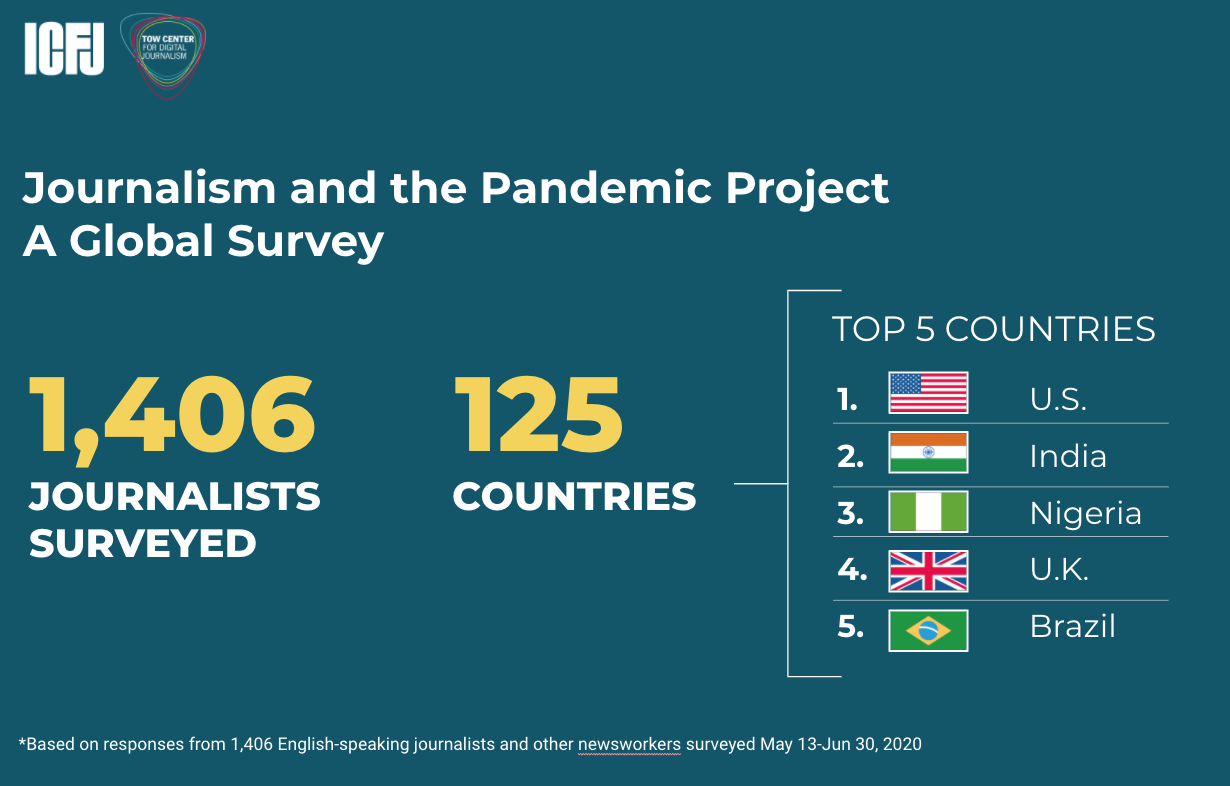MEDIA MATTERS
Journalism and the pandemic: Searching for a silver lining within the many dark clouds

The barrage of disinformation and misinformation that journalists confront in their daily work testifies to the scale of the ‘disinfodemic’ accompanying Covid-19 itself.
Last week, we published our initial findings from the first large-scale global survey of journalists since the Covid-19 crisis began. These findings are both startling and disturbing. Disinformation on the pandemic is coming from every direction, sources are scared to talk to journalists for fear of reprisals, and journalists themselves have much to fear.

The survey was conducted by the Journalism and the Pandemic Project – a collaborative research initiative from the International Center for Journalists (ICFJ) and the Tow Center for Digital Journalism at Columbia University. We launched the project in April to study the impacts of Covid-19 on journalism worldwide. We also wanted to assess our field’s most critical needs, and to help inform the post-pandemic recovery, recognising that professional journalism is an essential public service in times of crisis, and a pillar of vibrant democracies.
Our first findings are based on an analysis of 1,406 English-language survey respondents representing 125 countries, including South Africa. It is clear from our research (which is ongoing) that many journalists covering this devastating human story, at great personal risk, are struggling.
Journalists are facing a ‘disinfodemic’
The barrage of disinformation and misinformation that our respondents said they were confronting in their daily work testifies to the scale of the “disinfodemic” accompanying the disease itself.
Significantly, the respondents identified politicians, elected officials, government representatives and state-orchestrated networks as top sources of Covid-19 disinformation. The other top source of disinformation? Regular citizens.
Respondents also pointed to Facebook as the most prolific enabler of false and misleading information within the social media ecosystem. And, they expressed substantial dissatisfaction with the platforms’ responses to the content that they had flagged for investigation.
On top of all this, journalists were enduring increasing attacks – on and offline – as online abuse increased, and governments and other antagonists tried to discredit journalists and roll back press freedom under the cloak of the pandemic. Simultaneously, 48% of respondents said their sources expressed fear of retaliation for speaking to journalists.
The pressures on journalists were also coming from within news organisations. At the most basic level – providing appropriate safety equipment to prevent frontline reporters from contracting or spreading coronavirus – employers appear to have failed. Thirty percent of our respondents said that their news organisations had not supplied field reporters with a single piece of recommended protective equipment.
In the face of all this, perhaps it’s not surprising that 70% of our respondents rated the psychological and emotional impacts of dealing with the Covid-19 crisis as the most difficult aspect of their work. A similar number (67%) identified concerns about financial hardship as a significant difficulty, while the intense workload was ranked the third-biggest challenge, ahead of social isolation and the risk of actually contracting the virus.
Our respondents also told us about pandemic-induced unemployment, salary cuts, and outlet closures as news organisations took a huge revenue hit during the first phase of the crisis. We expect to see a more complete picture of economic hardship emerge as the pandemic progresses, but even in the earliest months of the spread of Covid-19, a significant number of our respondents had already seen their news organisations’ revenues drop by more than half.
Still, there were some bright spots. Forty-three percent of the respondents said they felt there was increased audience trust in their journalism during Covid-19’s first wave. And 61% said they felt more committed to journalism than they were before the pandemic. There was also evidence of increased community and audience engagement in reporting during the period. These comparatively optimistic findings may be key to reimagining post-pandemic journalism as a more mission-driven and audience-centred public service.
Paradoxes and opportunities
The paradoxical nature of some of our findings is noteworthy. Take, for example, the significant concern expressed by respondents about the threat that abusive and disinformation-prone politicians and elected officials pose to independent journalism, on the one hand, and the fact that 32% of respondents indicated that they were relying more heavily on government sources and official statements during the pandemic, on the other hand.
Another example of this dualism relates to the finding that social media companies – most notably Facebook (66%) – are identified as such prolific disinformation spreaders and poor responders to the information pollution they harbour and propel. Our respondents indicated frustration with the platforms over their failure to adequately deal with the disinformation crisis, and 20% said online abuse was “much worse” than their pre-Covid experiences. Yet, at the same time, 38% said they were relying more heavily on social media for audience engagement and distribution during the period.
These paradoxes highlight some of the challenges for journalism that are likely to emerge post-pandemic. But they also represent potential guideposts for those invested in journalism’s future. For example, how can audience engagement and trust be strengthened outside of the disinformation-riddled and abuse-prone social media platforms? How can journalists hold governments accountable for their management of the pandemic while restrictions on independent journalism, including the chilling of sources, leave them increasingly reliant on official statements? And how can the increased sense of vocational mission expressed by the journalists we surveyed aid responses to the deepening mental health crisis within the profession?
An aspect of our research that should concern everybody who wishes to see robust democracies survive is evidence of the weakening of journalistic institutions. One reading of our findings is that this is a difficult field to work in, a harder field to remain in, and one where corporate and political (self) interests are, by contrast, growing stronger. In parallel, the disinformation swamp grows deeper and murkier.
There are clear signposts here for those who seek to fund and lead the development of journalism. Basic resources are scarce; so is training in relevant techniques and technologies that help distributed newsrooms report stories and aid counter disinformation work. We often think of innovation as being a technical process, but it is time for newsrooms, that are able, to also innovate their human processes, particularly around support for employees who are suffering mental health issues, burnout and abuse in the course of their work.

As the world careens into Covid-19’s second wave, journalism is still reeling from the devastating impacts of the first. But it is essential that those invested in journalism’s survival – including anyone who wants to access trustworthy public health information in the middle of a pandemic – take stock now.
As journalists, we are living through this pandemic with our communities. With our audiences, we’re enduring lockdown, illness, hardship and fear. We also have a shared reason to invest in and defend public-interest journalism as the coronavirus crisis wears on. Without it, access to potentially life-saving health information and the ability to scrutinise governments’ responses to the Covid-19 crisis may disappear into the disinformation swamp – along with our mutual right to media freedom and democracy. DM

This is adapted from the first report of the Journalism and the Pandemic Project published by the International Center for Journalists (ICFJ) and the Tow Centre for Digital Journalism at Columbia University. It is available to download at icfj.org. Editing: Sharon Moshavi.

















 Become an Insider
Become an Insider
Comments - Please login in order to comment.